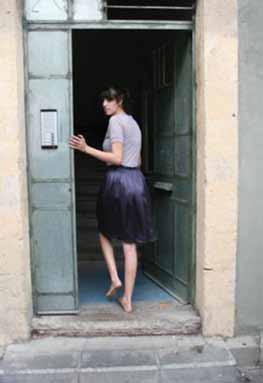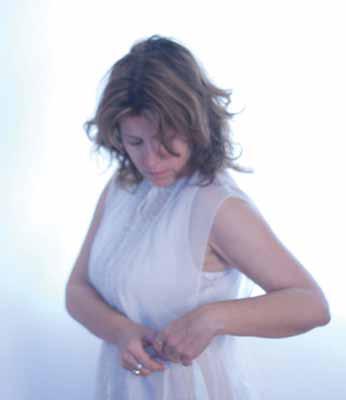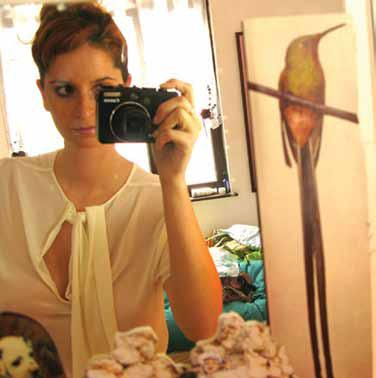
Standing Out
In the early years of second-wave feminism, some activists thumbed their noses at Vogue, Seventh Avenue, and their mother’s closets. Liberated women wore their disdain for fashion as a badge of honor on their slogan T-shirts. No more dressing to please men. Or to arouse other women’s envy. No more color-coordinated outfits. According to these women, if you looked good you couldn’t be smart and if you were smart or wanted to be taken seriously you couldn’t look good.
Though I deplore the culture’s obsessive focus on women’s appearance, that bifurcated view never made sense to me. I see dressing ourselves as just another means of expressing our uniqueness and individuality. I think clothes are fun and I pay no attention to the fashion fascists. What’s more, I see the issue Jewishly: In the same way that Judaism expects us to embellish sacred objects, I believe the human body deserves to be embellished. What matters about the Torah are its words, yet we dress the scrolls in velvet, silver bells, and gold trim, to signify the preciousness within. We set a beautiful table for Shabbat and Pesach; we don’t make do with paper plates and plastic cups unless we have to.
Likewise, humanity, the ultimate fruition of God’s creation, is worthy of respectful embellishment. Beautification of the body need not signify idolatry of the self but rather a manifestation of the uniqueness of each life, and a measure of how much we value individual creativity and human variety. We dress nicely for services and buy new clothes for Rosh Hashanah. Why go out in shmattes the rest of the year?
It’s all of a piece with the theology of perfecting creation. If you believe, as I do, that it’s the job of human beings to improve upon and complete what God couldn’t finish, then you will conclude, as I have, that dressing the body is just another opportunity for us to elaborate upon what we have been given.
As for how to elaborate and embellish, I’m not interested in this year’s “trends.” The quickest way to stop me from buying something is to tell me everybody is wearing it. I want what nobody’s wearing. This, I suppose, is consistent with my resistance to all forms of convention. As an article of faith, I won’t conform to anything or anyone who tells a woman what she “should” do — and that includes the arbiters of fashion.
Dena Pinsky is probably to blame for my attraction to counter- conventional clothing. While the rest of us were wearing little white dickies and circle pins, Dena came to school in a shell pink angora sweater and a swirly crushed velvet skirt. I don’t remember anyone else in my fourth grade class, but I remember Dena. She wore what nobody else was wearing.
Right now I am totally thrilled with my new Ugg boots. Unlike any Uggs I’ve ever seen, these black sheepskin boots are banded up the leg with shaggy black fur that looks like it was sheared off a long-haired mountain goat. Fabulous! I bought them three weeks ago and I’ve already worn them 10 times.
Unusual boots are my weakness. Since I’m generally a serious person, I like to wear something quirky for contrast. For instance, the zebra boots I got at Housing Works, the thrift shop whose proceeds benefit people with AIDS. I love that store. People donate all sorts of great shoes and boots, most of them hardly worn. You never know what you’ll find there. I haven’t been to Macy’s or Bloomingdale’s in years.
This may be harsh, but I have to say that these days, when I go to a Jewish women’s event, nearly everyone looks the same. One year they were all wearing flowing pants and gold jewelry. Now it’s black tights and short dresses, blow-dried hair and super-high heels. A herd mentality seems to have taken hold in the Jewish community; it’s as if everyone subscribes to the same fashion bulletin and they’re trying to out-impress each other with how slavishly they’ve followed its decrees.
I wonder about the cost for women of subverting their own personal style to conform to this year’s look. I wonder if, after constantly crushing their individuality in the fashion arena, they also pay a price — emotional, spiritual, or even political — in terms of how they operate in other contexts and how they feel about themselves in the world. If a woman has sacrificed her authenticity and integrity to fit in with what “everyone is wearing,” if she can’t go against the grain and wear white after Labor Day and before Memorial Day, if she won’t express her creativity and personal style in dress, I worry that she won’t have the backbone to go against the grain and demand her rights, or stir the pot of social change, or advocate for the underdog.
I’m certainly no fashion plate. My daughters are always begging me to let them edit my closet and get rid of my fringed vest from the 1970s or the pleated skirts I love to wear with boots. I give in sometimes, just to keep peace in the family, but sometimes I retrieve an item from the giveaway pile after they’ve gone.
When hemlines went down, mine stayed above the knee, because I’m only five foot three, and long skirts make me look like I’m barely 60 inches tall, and make me feel short, which I don’t feel otherwise. For the same reason, you will never see me in a round-toe shoe. I think they look stubby. If I had to wear a round-toe shoe just because they’re “in,” I would have an out-of-body experience; I wouldn’t feel like me.
I learned that shoes can be hazardous to your mental and physical health when I was 14, and my boyfriend took me to Times Square on New Year’s Eve. After more than a decade of only being allowed to wear brown oxfords or Mary Janes, on this night I wore high-heeled shoes — silk pumps died apple green to match my dress — because my mother said I could, and because I wanted to look older and taller and sexier (not easy when you’re still flat-chested), and because the models in Seventeen magazine wore high-heeled pumps when they went out on dates.
Walking to the subway station in Queens, I was already pretty hobbled, and by the time my boyfriend and I got off the F train at 42nd Street, the balls of my feet were like hot coals, the blisters on the back of my heels were bleeding, and the backs of my “sexy” shoes were rubbing bone. I was in agony, and the night had barely begun. I slid a folded up tissue between my heel and the shoe but still couldn’t bear the pain, so I finally took off the pumps and in stockinged feet, on December 31st, stood for three hours on a copy of the Daily News that I’d rescued from a trash basket. What a bummer. Needless to say, I had a completely different evening than my comfortably-dressed boyfriend. I felt like a fool.
The point is, fashion isn’t trivial; it can be crippling, both literally and metaphorically; it can distort and disfigure who we are, and put a scrim, a false front, between us and other people. I’m talking about core identity, here — how we feel about ourselves as we move through our lives, stand in a public place, enter a party, sit in a meeting. Anything that takes away from our sense of being real and comfortable can’t be good for us. So what’s with those towering high heeled boots?
Letty Cottin Pogrebin, a founding editor of Ms. Magazine, is the author of nine books.
Mirit Weinstock: Fashion Designer
Israeli clothing designer Mirit Weinstock (miritweinstock.com) bucks the trend for fashion that looks better on the hanger than on humans. And instead of turning the camera on professional models, she asks her fans to submit self-portraits. The result? High-art photos of real women wearing Weinstock’s real clothes. The artists photographing themselves here all see self-fashioning as a canvas for creativity. In the photos we’ve selected, Israeli women draw on their own substantial talents to express both drama and playfulness in fashion. Efrat Hassan and Ira Shraberman are photographers whose work has been widely exhibited and published. And the woman on this issue’s cover is photographer Alicia Shahaf, also known for her project “Heroines,” portraits of women who have suffered sexual assault.



